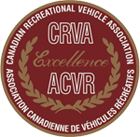What RV (Recreational Vehicle) type interests you most?

You’ve seen the Go RVing ads on TV, many RV types rolling down the highway, visited a campground or been with a friend or neighbor who owns an RV. You have an interest, but not quite sure how to describe your RV of choice. Here are pictures, descriptions and codes that will assist you in your selection.
Recreational vehicle means a structure designed to provide temporary living accommodation for travel, vacation, or recreational use, and to be driven, towed, parked or transported. Living accommodations may include sleeping, kitchen, bathroom, and systems for fresh and waste water, 110/12V electricity, propane, heating, air conditioning, and entertainment. It has an overall length not exceeding 13.2 meters (42’ 11”) and an overall width not exceeding 2.6 meters (8 ft 6 in), where the width is the sum of the distance from the vehicle centreline to the outermost projections on each side (including door handles, water connections, etc.) when the vehicle is folded or stowed away for transit. Such structures include folding camping trailers, travel trailers, fifth wheel trailers, slide-in truck campers and motorhomes.
Recreational vehicles are divided into three basic RV types:
Motorized RVs:
An RV built on or as an integral part of a self-propelled motor vehicle chassis, combining transportation and living quarters in one complete unit.
- Class A Motorhome – The largest of the motorized RVs, is a luxury motorhome unit entirely constructed on a bare, specially designed motor vehicle chassis.
- Class B Motorhome (Camper Van) – The Class B Motorhome is generally referred to as a Camper Van. This unit is built using a conventional van to which a raised roof is added.
- Class C Motorhome – Sometimes referred to as a mini-motorhome, a unit built on an automotive manufactured chassis with an attached van cab section.
Towable RVs:
An RV designed to be towed by a motorized vehicle (car, van or pickup truck) and is of such size and weight as not to require a special highway movement permit. Towable RVs do not require permanent on-site hook-ups.
- Travel Trailer – Sometimes referred to as a conventional travel trailer, a unit designed to be towed by a car, van or pickup by means of an equalizing frame hitch.
- Fifth-Wheel Trailer – A two-level unit designed to be affixed and towed by a pickup truck equipped with a special 5th wheel hitch in the truck bed.
- Folding Camping Trailer – A lightweight unit with sides that collapse for towing and storage. This unit is also referred to as a Fold Down Trailer, Pop-up Trailer or Tent Trailer.
- Truck Camper – This small recreational vehicle unit is loaded onto, or affixed to, the bed or chassis of a pickup truck.
- Toy Hauler – This unit is known in the industry as a “Specialty Trailer”. It is a travel trailer or fifth wheel trailer with temporary living quarters in the forward section and compartment in rear for your ATV’s, motorcycles and other toys.
- Hybrid/Expandable Travel Trailers – Known in the industry as a “Hybrid Travel Trailer”, this is a conventional travel trailer with folding bunk ends.
Park Models:
Park Models are available in two different classes: the Park Trailer 8′ Wide which is built to RV specifications, the CSA Z-240 Standard, or the Park Model 10′ to 16′ Wide, which is designed for seasonal use, generally in just one location, and built to the CSA Z-241 Standard.
- Park Trailer 8′ Wide – A unit designed to be towed by a heavy-duty tow vehicle (auto, van, pick-up truck, etc.) but is of restricted size and weight so that it does not require a special highway movement permit. The maximum width when being towed is 2.6 meters (102 inches)(8.6ft). Designed for infrequent towing, it is not fitted with a 12-volt system for fixtures and appliances. Once on site in the set-up mode it must be connected to the local utilities. This recreational vehicle is built on a single chassis mounted on wheels. It usually has one or more slide-outs, but when in set-up mode the gross trailer area does not exceed 37.2 sq. meters (400 sq. feet). It conforms to the CSA Z-240 Standard for RVs.
- Park Model 10′ to 16′ Wide – It is built on a single chassis mounted on wheels, which may be removed and returned to the factory. The unit is designed to facilitate occasional relocation, with living quarters for a temporary residence or seasonal use, and must be connected to those utilities necessary for the operation of installed fixtures and appliances. It has a gross floor area not exceeding 50 square meters (approximately 540 sq. feet) in the set-up mode and has a width greater than 2.6 meters (8′ 6″) in the transit mode. Widths can be 10’, 12’, 14’ and 16’ generally. Park Model units always require a special tow vehicle and a special permit to move on the road as the width of the unit is greater than 2.6 meters. It conforms to the CSA Z-241 Standard for RVs.
NOTE: These definitions has been developed by a joint industry task force of manufacturers, dealers, campground owners and the Canadian Standards Association and is the basis for the CSA Z-241 Standard for Park Model Recreational Units.
